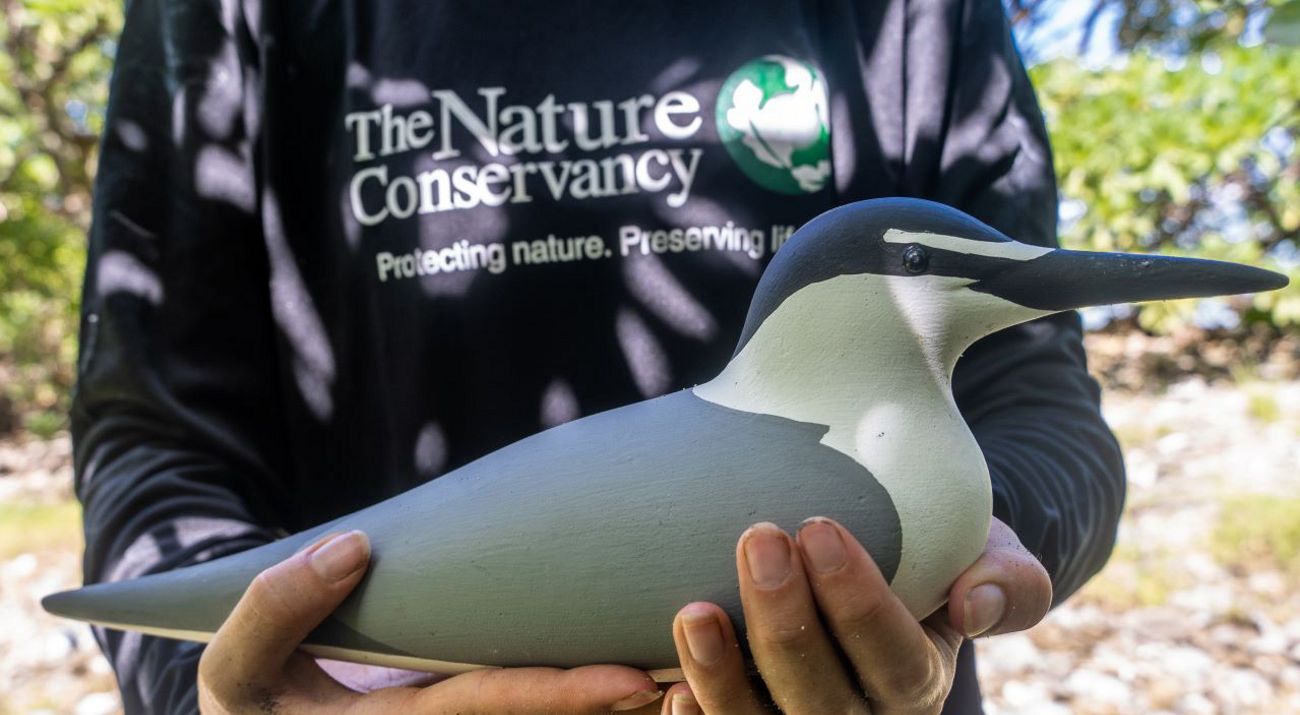
Media Contacts
-
Evelyn Wight
Senior Communications Manager
Phone: 808-537-3570
The Nature Conservancy Hawai‘i and Palmyra announces that a tiny grey-backed tern chick has been observed at Palmyra Atoll, validating that seabird attraction efforts are working.
This bird is one of eight seabird species that is known to the region but has been conspicuously absent from the atoll, likely due to invasive rats that were introduced during the World War II era. In 2011, rats were successfully eradicated from Palmyra Atoll and in 2020 scientists began deploying social attraction techniques including wooden seabird decoys mimicking colonies and “seabird discotheques” that play the calls of the eight absent seabirds 24/7.
“It is very exciting to observe this grey-backed tern chick at Palmyra,” says Hannah Martin, TNC Palmyra Conservation Science Volunteer. “An important part of our work as Science Volunteers at Palmyra is to maintain the social attraction sites and record observations or indications of the seabirds we’re trying to attract back to Palmyra. It’s very rewarding to see a first indicator of success!”

Grey-backed terns (Sterna lunata), or Pākalakala in Hawaiian, are found in Hawai‘i as well as other remote islands across the Pacific. While they are not endangered, they are especially vulnerable to invasive predators as they lay a single egg per season. They feed on small fish and squid.
“The discovery of this chick is very exciting because it signals we are moving in the right direction with our seabird restoration efforts at Palmyra,” says Katie Franklin, Palmyra Island Conservation Strategy Lead. “We are collaborating with the U.S. Fish and Wildlife Service to enhance Palmyra’s seabird habitat and maintain social attraction sites across the atoll to encourage seabirds extirpated from the atoll to come home and settle down.”
Approximately 30% of seabirds are endangered, making them one of the most threatened bird groups on the planet. They play a vital role in island ecosystems – their guano provides nutrients for plants and trees on land and directly increases the health and resilience of coral reefs and fish. Providing safe havens that are predator-free, like Palmyra Atoll or areas with predator-proof fencing, gives these birds a chance to thrive.
This project is made possible through a grant from the National Fish and Wildlife Foundation.
The Nature Conservancy is a global conservation organization dedicated to conserving the lands and waters on which all life depends. Guided by science, we create innovative, on-the-ground solutions to our world’s toughest challenges so that nature and people can thrive together. We are tackling climate change, conserving lands, waters and oceans at an unprecedented scale, providing food and water sustainably and helping make cities more resilient. The Nature Conservancy is working to make a lasting difference around the world in 83 countries and territories (39 by direct conservation impact and 44 through partners) through a collaborative approach that engages local communities, governments, the private sector, and other partners. To learn more, visit nature.org or follow @nature_press on X.